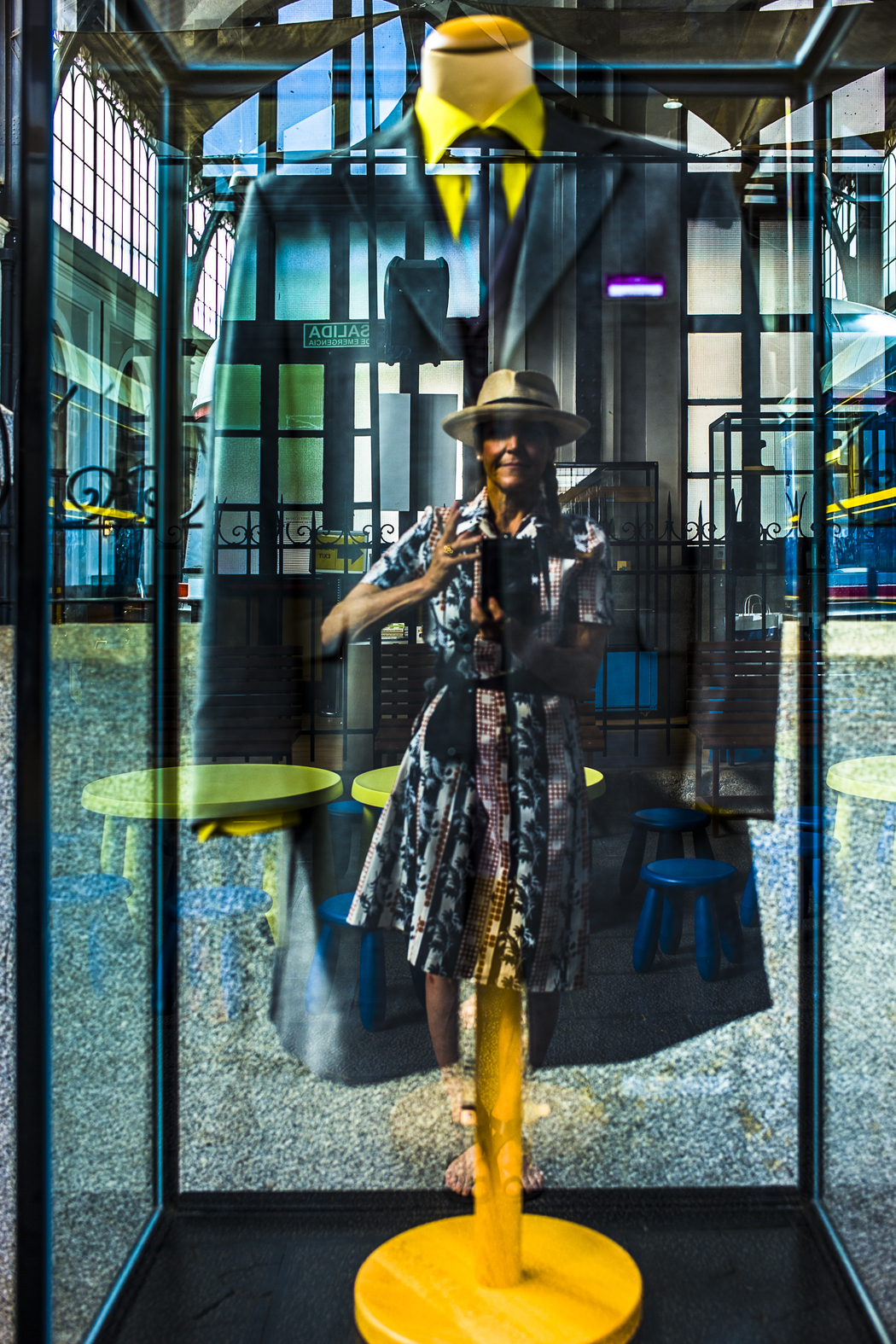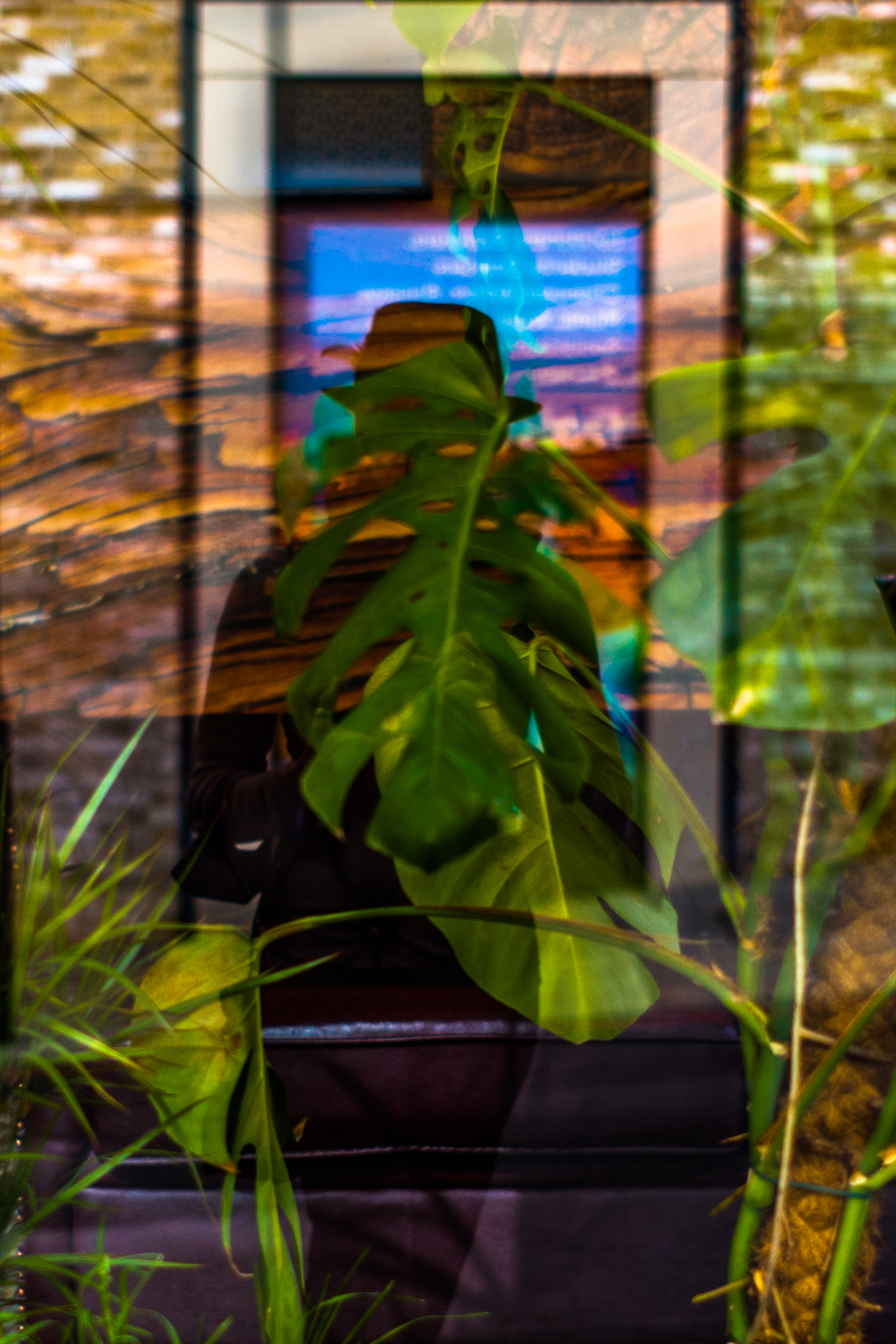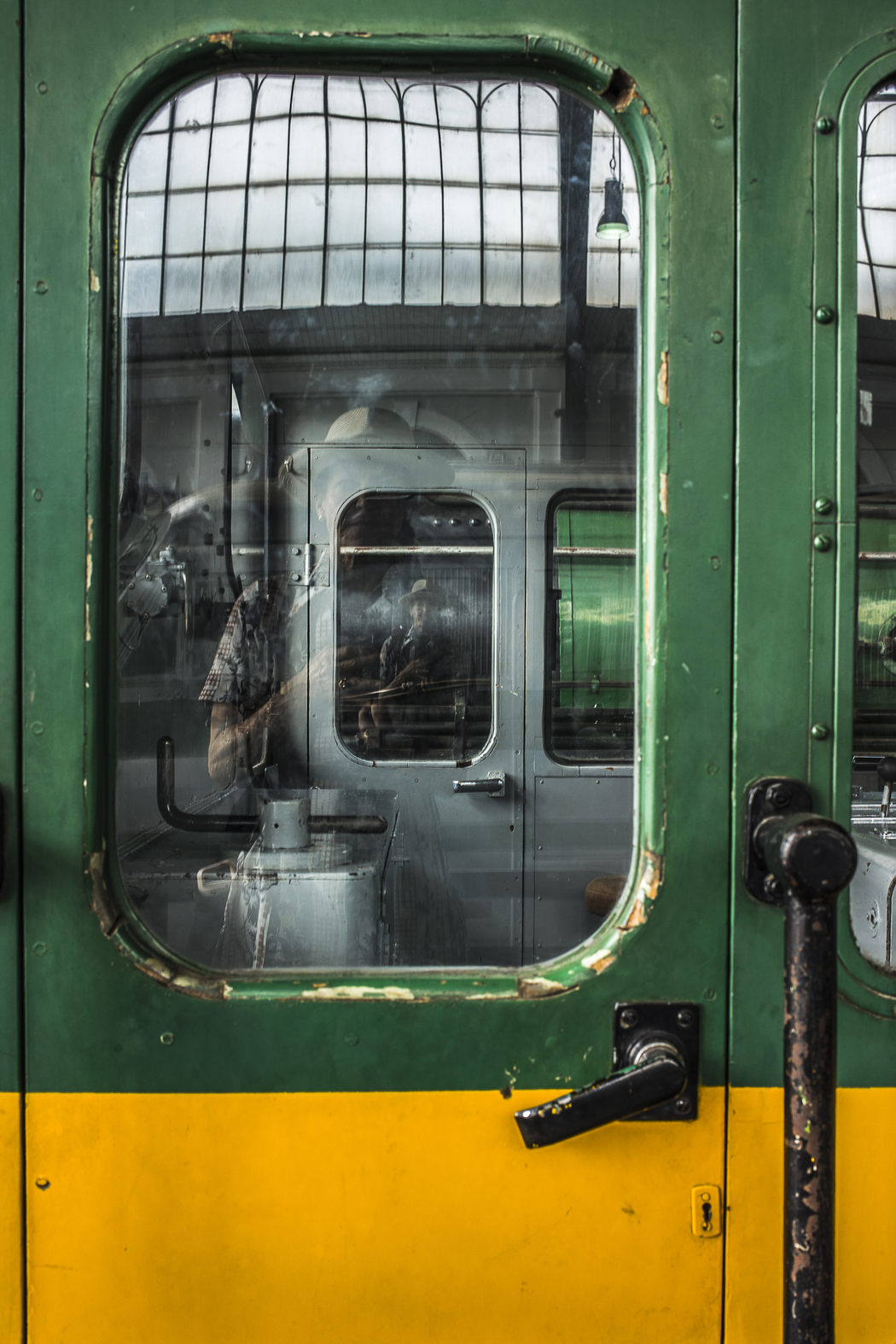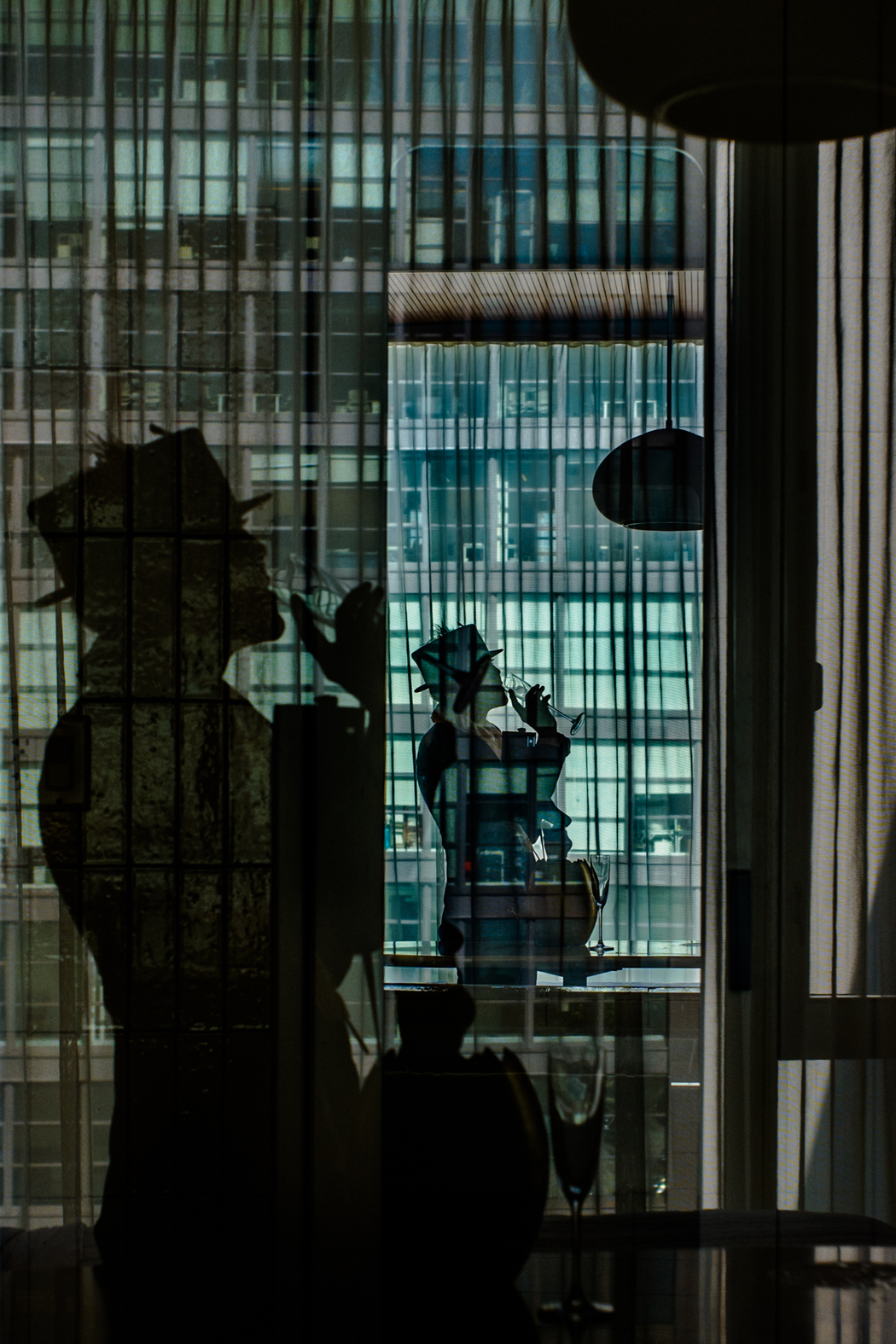Karen Ghostlaw
Year of birth: 1962.
Where do you live: Newburgh, New York.
Your education: BA with Honors Pratt Institute.
Describe your art in three words: Provocative Visual Storytelling.
Your discipline: Pictorialism.
Website | Instagram
Your series “A Page In Time” beautifully explores personal transformation and the nature of existence. What inspired you to focus on self-portraiture as a medium to express these themes?
The inspiration for focusing on self-portraiture in my series A Page In Time comes from my desire to explore my own transformation and the changing nature of my identity. After dedicating many years to motherhood and homeschooling my four children, I found myself at a crossroads, questioning who I was as my children became more independent. As they reached milestones like graduating high school and applying for university, I realized I was transitioning into a new phase of life—one where I would no longer be needed in the same way. This shift left me grappling with the question, Who am I?
I received a BA in Photography from Pratt Institute in the early 1980s, the camera became a natural part of my being, my tool to define the way I perceive the world around me translating what I see into visual narratives. I turned to women artists and photographers that have explored self-portraiture that inspired me to begin my self portrait study in the early 2000’s. Women like Frida Kahlo, Cindy Sherman, Vivian Maier, and Diane Arbus, who used self-portraiture to explore themes of identity, gender, and personal narrative.
Self-portraiture was the catalyst that offered me a way to visually document a period of introspection and self-discovery. It became a means not only to reflect on my personal evolution but also on the broader experience of womanhood. The idea of using my own image to explore themes of identity, transformation, and existence felt both natural and empowering. I was able to not only examine my own journey but also connect with the universal experience of women as they navigate obstacles and face challenges through different phases of life.
My reflective self-portraiture became an archaeology of self discovery—digging deep to find answers that reveal new potential. It empowers me to make decisions that help rewrite the stories of my identity and guide my personal journey, a page at a time.
 Karen Ghostlaw | A Page In Time | 2022
Karen Ghostlaw | A Page In Time | 2022
How does the interplay of light, shadow, and reflective surfaces influence the narrative in your work? Could you walk us through your creative process when working with these elements?
The interplay of light, shadow, and reflective surfaces plays a pivotal role in the narrative of my work. These elements act as metaphors for the internal journey I’m exploring — the contrasts between what is seen and unseen, the known and the unknown. Light represents clarity, revelation, and understanding, while shadow embodies the hidden aspects of the self, the parts that are often overlooked or suppressed. Together, they create a visual dialogue that speaks to the tension between revelation and concealment, the visible and the invisible layers of our identities.
Reflective surfaces serve as a powerful metaphor for introspection, inviting viewers to look beyond the surface and explore the deeper layers of the self. Just like the fractured or incomplete reflections we see in mirrors, they represent the complexities women face—societal pressures, internal conflicts, and shifting identities. The image in the reflection changes with each angle, symbolizing the evolving roles and self-worth women negotiate throughout life. In this way, mirrors and reflective surfaces visually capture the ongoing journey women undertake, confronting and overcoming the obstacles life presents.
When I approach these elements in my creative process, I begin with a concept as I look through the viewfinder. I carefully consider how light can highlight or obscure certain aspects of my image, shaping the mood and the narrative. I position myself in relation to the light and shadows, allowing the interplay between them to emerge organically, almost as a conversation. The reflective surfaces are strategically placed to guide this dialogue, often revealing new facets of my expression or drawing attention to an element of the scene that would otherwise remain hidden. This idea becomes a photograph through the editorial process in lightroom.
As I work, I’m constantly aware of how these elements interact and evolve. Sometimes, the shadows may overpower the light, creating a sense of mystery or uncertainty. Other times, the light floods the space, illuminating parts of myself that I may have avoided acknowledging. This process is fluid and intuitive, much like the journey of self-discovery itself — an ever-changing, evolving dance between the light and dark within us.
 Karen Ghostlaw | A Page In Time | 2022
Karen Ghostlaw | A Page In Time | 2022
The reflective surfaces you use, like water, glass, and metal, seem to have symbolic significance. What do these surfaces represent in the context of your work?
The reflective surfaces I use—such as water, glass, and metal—carry deep symbolic significance in my work. Each of these surfaces represents a different layer of introspection and personal reflection. Water, with its fluidity and movement, symbolizes the ever-changing nature of identity and emotion. It reflects not just the surface but often distorts the image, reminding us of how our perceptions can shift and evolve, much like our inner lives. At times, water also reveals the bottom, offering a glimpse of what lies beneath the surface. This element speaks to the structure of history—the foundation of our past—that is always present and continues to shape who we are, even when we may not be fully aware of its influence. The depths of water become a metaphor for how our history, our experiences, and our memories are always intertwined with our current selves, forming an unbroken connection between where we’ve been and who we are becoming.
Glass, transparent yet fragile, speaks to the vulnerability we experience as we expose our true selves. It reflects our image clearly, but it also separates us from the world, creating a barrier that can both protect and isolate. It highlights the tension between what we allow others to see and the parts of ourselves that remain hidden or shielded. Glass also captures the reflections of objects, textures, and even people, subtly incorporating the external influences that relate to the obstacles and challenges we face. These reflections often appear fragmented or obscured, mirroring how these forces—both internal and external—can cloud our sense of self or alter our path. Glass embodies the paradox of being both stagnant and transient; while it may seem solid and unchanging, the reflections constantly shift and evolve, symbolizing how we are influenced by the world around us, yet remain in a constant state of flux as we navigate through life’s complexities.
Metal, or stone, with its cold, hard surface, reflects in a more defined and structured way, often offering a more rigid and unyielding image. It speaks to the strength and resilience we, as women, often must embody as we navigate through life’s complexities. These materials also bring texture to the reflection, mirroring the jagged and uneven surfaces of our personal journeys. Just as geology shapes the earth through time, with each layer of rock and mineral telling a story of transformation, metal and stone remind us of the long process of growth and change. The reflective surfaces of these materials evoke the idea of endurance—the way we weather life’s challenges, sometimes feeling worn down, but always developing a deeper sense of strength and understanding. They remind us that the reflective process, much like the shaping of stone, can be hard yet necessary in forming and understanding our identity.
Reflective surfaces like water, glass, and metal each offer a unique perspective on identity and transformation. Together, they highlight the contrasts between clarity and distortion, vulnerability and strength, reminding us that our identity is constantly evolving. These surfaces help us reflect on our journey and how we continue to redefine ourselves as we move forward.
Can you share more about your experience creating self-portraits during the pandemic? How did this period of isolation impact your work both creatively and personally?
During much of the pandemic, my family and I lived in a log cabin in a remote area of the Adirondack Mountains in New York State, surrounded by nature and far removed from the layers of glass and urban spaces I had once been so accustomed to. Growing up in this area, I always had a deep connection to the land, so returning to the Adirondacks felt like a return to my roots. This isolation became a pivotal point in my self-portraiture work. Without the typical constraints of the city or the distractions of everyday life, I found myself drawn to the raw, unfiltered landscape around me. I began to explore the idea of nature as a reflection of the self, finding new ways to engage with my environment and my own image.
Mirrors and water became central to this exploration. I would sometimes drag mirrors into the wilderness, allowing them to capture not just my reflection but the natural world as well. The mirrors, often placed in streams or positioned among trees, became a way to merge the self with nature, offering a powerful metaphor for how isolation can lead to deeper self-reflection and a re-connection with one’s surroundings. The reflections in water and glass highlighted the contrast between the stillness of nature and the restlessness I sometimes felt within, creating a poignant dialogue between internal and external worlds.
Creatively, this period allowed me to step away from urban distractions and explore a more intimate, direct connection with both myself and the environment. The isolation sparked a deeper sense of introspection, and I began to focus more on the simplicity and clarity that nature provided, using mirrors and water to capture and reflect the changing landscapes of my emotions and thoughts. Personally, it was a time of reconnection—both with myself and with the world around me—and the process of creating self-portraits in this way helped me find clarity in a time of uncertainty. The Adirondacks, with its vast wilderness and quiet stillness, allowed me to reconnect not only with my past but also with a deeper, more authentic version of myself.
 Karen Ghostlaw | A Page In Time | 2022
Karen Ghostlaw | A Page In Time | 2022
Your work often explores the interconnectedness of individual identity with the greater whole. How do you perceive the role of women in the world today, and how does this influence your art?
In my work, I strive to support not only women and people identifying as women but also gender-diverse individuals, recognizing the vast spectrum of human experiences and identities. Embracing and celebrating the diverse expressions of gender has deepened my understanding of the complexities of identity and how it shapes our interactions with the world around us. This commitment to inclusivity has expanded the scope of my self-reflective study and self-portraiture, allowing me to engage with a wider range of voices and stories, which, in turn, has enriched my own creative process.
Through this exploration of self-portraiture, I have learned that the act of turning the camera on oneself is not just about capturing an individual image, but about delving into a larger conversation about identity and human experience. The reflective process of capturing oneself has evolved beyond just a study of my own identity—it has become a way of understanding the universal themes of transformation, struggle, and resilience that are shared by all people. This self-reflective practice has allowed me to recognize the power of portraiture to bridge divides, fostering empathy and understanding. Through this journey, I’ve come to see that self-portraiture, when viewed in the context of others’ experiences, reveals much more about the interconnectedness of all people, regardless of gender or identity.
You describe your work as an existential reflection on reality and humanity’s place within it. How do you see the evolution of identity and consciousness in today’s society?
The evolution of identity and consciousness in today’s society is deeply interconnected with the way we are constantly shifting and adapting to the world around us. We’re living in a time where identity is no longer a fixed concept, but something that is continuously evolving. Technology, social movements, and even global challenges push us to rethink who we are and where we fit into the larger story of humanity.
Identity now exists in a space where we can explore and redefine ourselves based on both internal desires and external influences. We’re constantly exposed to the identities of others through social media, offering new ways of understanding ourselves in relation to the world. This can create a sense of connection, but also confusion, as we try to navigate authenticity in the face of so much influence. What’s even more powerful is that these shifts in identity are no longer confined to traditional categories like gender, race, or class. People are increasingly breaking free from these conventional labels, creating new and more nuanced ways of identifying themselves. This fluidity opens up the possibility for anyone—regardless of gender or background—to find a deeper, more personal sense of self that doesn’t necessarily conform to societal expectations or norms.
This evolution is not just about expanding our understanding of who we are but about embracing the diversity and complexity of human experience. It’s about acknowledging that identity, in its truest form, isn’t something rigid or defined by others—it’s a continuous process of self-discovery, shaped by the intersection of who we are inside and the world we navigate. In this ever-changing landscape, authenticity becomes an individual journey for each person, a quest to define themselves beyond the traditional boundaries.
Consciousness, too, is evolving as we become more aware of our shared existence. We are increasingly mindful of how our individual actions and experiences are linked to global issues like climate change, mental health, and social justice. This growing awareness shapes our identity, encouraging us to look beyond the self and embrace a greater sense of collective responsibility. It’s as if we are starting to recognize that our personal journeys are part of a much larger human narrative, where each shift and change we undergo reflects a broader, unified whole.
In my work, I explore this constant transformation of identity and consciousness. Through self-portraiture, I examine the way our sense of self is not static but shaped by ongoing reflection, growth, and change. It’s an existential process, questioning how we find meaning in such a dynamic and sometimes overwhelming world.
 Karen Ghostlaw | A Page In Time | 2022
Karen Ghostlaw | A Page In Time | 2022
As the Co-Founder of The Pictorial List nonprofit and Editorial Director of The Pictorial List Magazine, you’ve collaborated with photographers worldwide. How has this global exchange influenced your artistic development?
Supporting photographers and the art of photography, particularly women photographers, has been deeply fulfilling. By providing a platform for photographers to share their stories and visual narratives, I feel we’re contributing to a global movement that values and elevates the art of photography. My editorial work has allowed me to explore the intersection of visual storytelling and artistic expression, fostering a space and nurturing a community where photographers can develop their unique voices and engage in meaningful dialogue about their work. I am proud to be part of a community that spans the globe, where every new collaboration not only helps me grow as an artist but also deepens my understanding of photography’s universal power to connect people across cultures, races, genders, and experiences.
Recently, I’ve also found it incredibly enriching to connect more deeply with my local community in the Hudson Valley. After years of global collaboration, being able to contribute locally feels like a natural extension of everything I’ve learned and experienced. The connections I’m forming here allow me to share the insights, empathy, and understanding I’ve gained through my work with photographers from around the world. Now, I feel that I can bring these global perspectives back to the community I call home, offering something meaningful and valuable in return. This experience of bridging local and global spaces has given me a sense of purpose and fulfillment, reminding me of the importance of building connections wherever we are—whether it’s across the world or right in our own backyard.
Photography has always been at the core of my personal and artistic journey, and it is through photography that I’ve been able to truly connect with the world around me. The power of visual storytelling, to capture moments, emotions, and stories, is unmatched. Photography allows us to express complex ideas and narratives in a way that words cannot, and it has always been an essential tool for exploring and reflecting on identity. The Pictorial List is deeply rooted in the history of the Pictorialist movement, where photographers like Alfred Stieglitz helped elevate photography as an art form. We continue that legacy by supporting photographers and visual storytellers, helping them develop a narrative and a dialogue around their work. Through interviews, book reviews, and features of photography stories and projects, we provide a global platform that encourages further support and fosters a community where photographers can connect with like-minded individuals, both locally and internationally.
Looking ahead, we’re excited to continue developing our nonprofit and giving back to the community that has supported me so generously. I’m particularly grateful for the Bank Art Gallery in Newburgh, New York, whose support of The Pictorial List Volume One—New York was instrumental in bringing this vision to life. Their generosity and commitment to the arts have played a key role in my ongoing exploration of Who Am I as an artist and individual, and they have provided a space for me to continue my personal journey of growth and discovery. This community has welcomed me back home, and I look forward to nurturing that connection as we develop our nonprofit, supporting a diverse and inclusive community of artists, photographers, and visual storytellers, helping them grow and find meaningful support through the power of art and narrative. I look forward to adding a new chapter to A Page In Time.

Leave a Reply